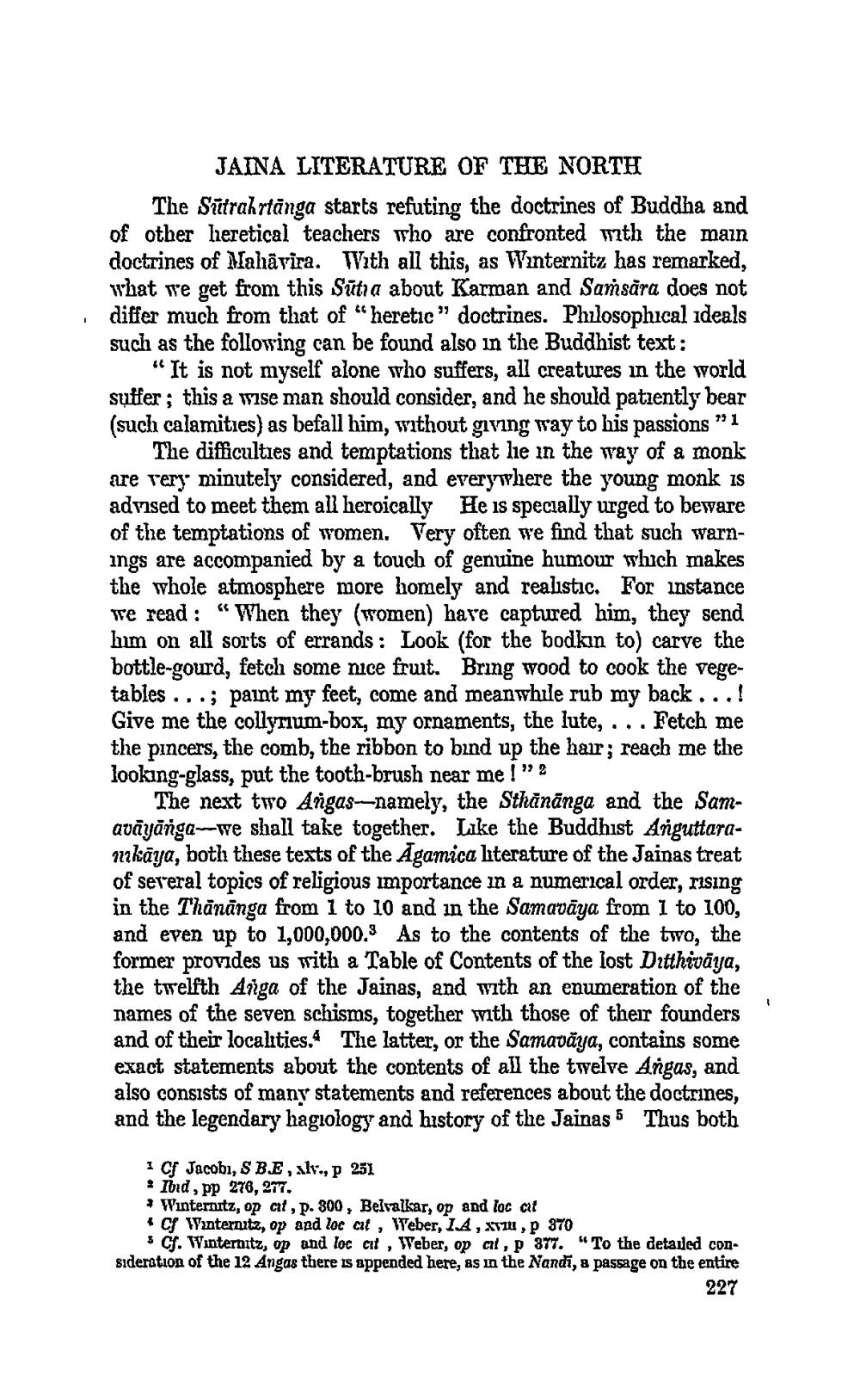________________ JAINA LITERATURE OF THE NORTH The Sitrahrtanga starts refuting the doctrines of Buddha and of other heretical teachers who are confronted with the main doctrines of Mahavira. Vith all this, as Winternitz has remarked, what we get from this Sitra about Karman and Samsara does not differ much from that of "heretic" doctrines. Philosophical ideals such as the following can be found also in the Buddhist text: "It is not myself alone who suffers, all creatures in the world suffer; this a wise man should consider, and he should patiently bear (such calamities) as befall him, without giving way to his passions" The difficulties and temptations that lie in the way of a monk are very minutely considered, and everywhere the young monk is advised to meet them all heroically He is specially urged to beware of the temptations of women. Very often we find that such warnings are accompanied by a touch of genuine humour which makes the whole atmosphere more homely and realistic. For instance Te read : "When they (women) have captured him, they send him on all sorts of errands: Look (for the bodkin to) carve the bottle-gourd, fetch some nice frut. Bring wood to cook the vegetables..., paint my feet, come and meanwhile rub my back ...! Give me the collyrium-box, my ornaments, the lute, ... Fetch me the pincers, the comb, the ribbon to bind up the hair; reach me the looking-glass, put the tooth-brush near me !" ? The next two Angas--namely, the Sthananga and the Samavayanga---we shall take together. Like the Buddhist Anguttara kaya, both these texts of the Agamica Iterature of the Jainas treat of sereral topics of religious importance in a numerical order, rising in the Thananga from 1 to 10 and in the Samavaya from 1 to 100, and even up to 1,000,000. As to the contents of the two, the former provides us with a Table of Contents of the lost Ditthivaya, the twelfth Anga of the Jainas, and with an enumeration of the names of the seven schisms, together with those of their founders and of their localities. The latter, or the Samavaya, contains some exact statements about the contents of all the twelve Angas, and also consists of many statements and references about the doctrines, and the legendary hagiology and history of the Jainas 5 Thus both 1 Cf Jacobi, S BE,xlv., 251 * Ind, pp 276, 277. Wintertutz, opat, p. 800, Belvalkar, op and loc cut Cf Winternitz, op and loc at, iTeber, 1.A , xm ,p 870 * Cf. Waternitz, op and loc cit , Weber, op art, P 377. "To the detailed consideration of the 12 Angas there is appended here, as in the Nandi, a passage on the entire 227




